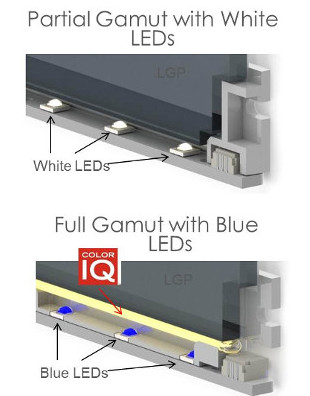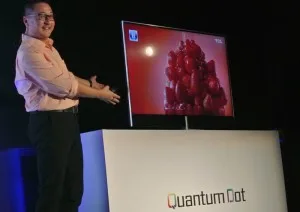Cadmium-free is the Plan

Although Nanosys started out producing cadmium-based QDs, the company is now developing cadmium-free materials as well. The underlying equipment is similar for both products, Hartlove said. Cadmium is a bit more efficient and provides a larger color gamut, so it is needed for Rec.2020. Samsung’s new QD-enchanced sets will display the DCI P3 gamut, which is used for digital cinema. (Although generous, DCI P3 is not as large as Rec.2020.)
Steve Ward, new Executive Chairman of QD Vision (Lexington, Massachusetts) introduced himself. He was formerly with ThinkPad and Lenovo (until 10 years ago), was former CIO at IBM and spent time with E Ink. Advanced Development Manager John Ho said the company finds the QD on chip approach very interesting, and that QD Vision’s quantum dots are particularly suited for the approach. Ho said, as the company has said repeatedly in the past, that QD Vision has spent significant effort to make its dots more resistant to heat and luminous flux than its competitors because using the dots in the company’s Color IQ element, which sits close to the LEDs and experiences high levels of heat and flux, requires it. These are just the characteristics, in enhanced form, that are required for the QD on chip approach.
Ho showed me a side-by-side demo of a QD-enchanced TV and an OLED TV. The OLED set indeed had deeper blacks, but the QD-enhanced set was brighter and had a larger color gamut, while still having black levels that were quite good.
QD Vision is obtaining new customers for its Color IQ approach, said CMO John Volkmann. The company believes the economies of this approach over the film approach will eventually result in it dominating the market.

